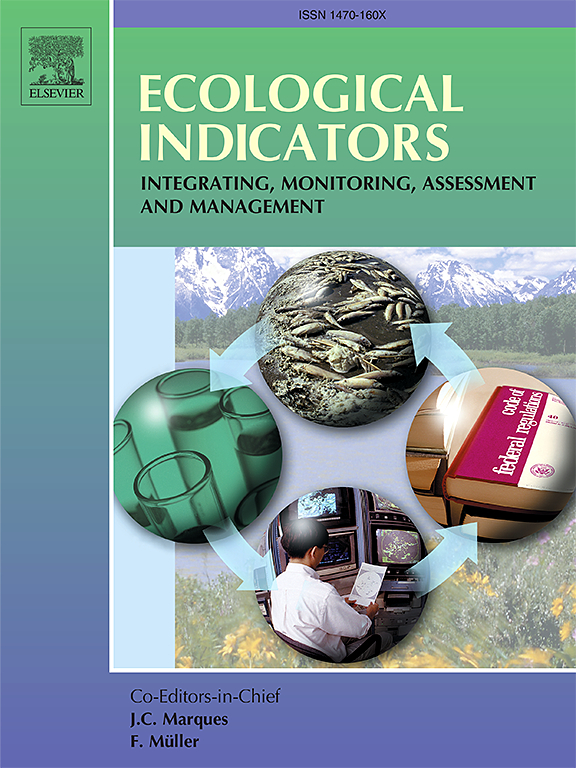优化海洋垃圾监测:在调查设计中平衡统计能力和试验规模
IF 7
2区 环境科学与生态学
Q1 ENVIRONMENTAL SCIENCES
引用次数: 0
摘要
进行功率分析是设计长期环境监测计划的最佳实践,以便可以评估调查设计元素(如样本量和时间重访)的权衡。然而,这些分析对数据的潜在分布、适当的模型结构和趋势检验的选择的先验决定很敏感。不恰当的趋势模型规范和不恰当的趋势测试会影响功率估计,导致对调查设计元素的错误选择、测试规模膨胀的趋势测试(即,检测到不存在的趋势的可能性增加),以及基于误导性信息的管理决策。在这项模拟研究中,我们进行了功率分析,为美国10个区域范围的全国海岸线海洋垃圾监测调查的设计提供信息。试点数据包括碎片项目计数有许多零,转化为项目密度。我们采用一种具有Tweedie条件分布的广义线性混合模型对已知趋势的模拟碎片物品密度种群进行建模。我们比较了三个趋势检验(z检验、似然比检验[LRT]和t检验)、5个水平的方差组成、5个时间重访设计和3个水平的年内复制的检验量和功率,这些样本在11年的监测期间内调查了50至62个地点。当碎片项目密度的年变化较大时,测试规模和功率受到负向影响。即使包括每年访问的站点的小面板,重新设计也使测试尺寸接近0.15的名义水平。在大多数情况下,LRT提供了名义趋势测试大小,除了碎片项目密度的年与年的变化很高和在多年间复制稀疏的情况下。在这些情况下,LRT显示出膨胀的测试规模和功率,t检验提供了一个更保守的,但低功率的趋势检验。当使用没有年度站点面板的重访设计时,轻轨的测试尺寸略有膨胀。我们的结果证明了在评估监测设计选择时评估测试尺寸和功率的重要性,以确保可以做出准确的趋势推断。本文章由计算机程序翻译,如有差异,请以英文原文为准。
Optimizing marine debris monitoring: balancing statistical power and test size in survey design
Conducting a power analysis is a best practice for designing long-term environmental monitoring programs so that trade-offs in survey design elements such as sample size and temporal revisits can be evaluated. However, these analyses are sensitive to a priori decisions about the underlying distribution of the data, appropriate model structure, and choice of trend test. Improper trend model specification and inappropriate trend tests can affect power estimates, leading to misguided choices of survey design elements, trend tests with inflated test size (i.e., increased probability of detecting a nonexistent trend), and management decisions based on misleading information.
In this simulation study, we conducted a power analysis to inform the design of a nationwide shoreline marine debris monitoring survey across 10 regional extents in the United States. Pilot data consisted of debris item counts having many zeros, transformed into item densities. We applied a generalized linear mixed model with a Tweedie conditional distribution to model simulated debris item density populations having known trend. We compared test size and power for three trend tests (Z-test, likelihood ratio test [LRT], and t-test), five levels of variance composition, five temporal revisit designs, and three levels of within-year replication for samples of 50 to 62 sites surveyed over an 11-year monitoring duration.
Test size and power were negatively affected when the year-to-year variation in debris item density was high. Revisit designs that included even a small panel of annually visited sites maintained test size close to the nominal level of 0.15. The LRT provided nominal trend test size in most cases except when the year-to-year variation in debris item density was high and in scenarios with sparse replication across years. In those cases, the LRT exhibited inflated test size and power, and the t-test provided a more conservative, but low power, test of trend. The LRT had slightly inflated test size when revisit designs without an annual panel of sites were used.
Our results demonstrate the importance of assessing both test size and power when assessing monitoring design choices to ensure that accurate trend inferences can be made.
求助全文
通过发布文献求助,成功后即可免费获取论文全文。
去求助
来源期刊

Ecological Indicators
环境科学-环境科学
CiteScore
11.80
自引率
8.70%
发文量
1163
审稿时长
78 days
期刊介绍:
The ultimate aim of Ecological Indicators is to integrate the monitoring and assessment of ecological and environmental indicators with management practices. The journal provides a forum for the discussion of the applied scientific development and review of traditional indicator approaches as well as for theoretical, modelling and quantitative applications such as index development. Research into the following areas will be published.
• All aspects of ecological and environmental indicators and indices.
• New indicators, and new approaches and methods for indicator development, testing and use.
• Development and modelling of indices, e.g. application of indicator suites across multiple scales and resources.
• Analysis and research of resource, system- and scale-specific indicators.
• Methods for integration of social and other valuation metrics for the production of scientifically rigorous and politically-relevant assessments using indicator-based monitoring and assessment programs.
• How research indicators can be transformed into direct application for management purposes.
• Broader assessment objectives and methods, e.g. biodiversity, biological integrity, and sustainability, through the use of indicators.
• Resource-specific indicators such as landscape, agroecosystems, forests, wetlands, etc.
 求助内容:
求助内容: 应助结果提醒方式:
应助结果提醒方式:


